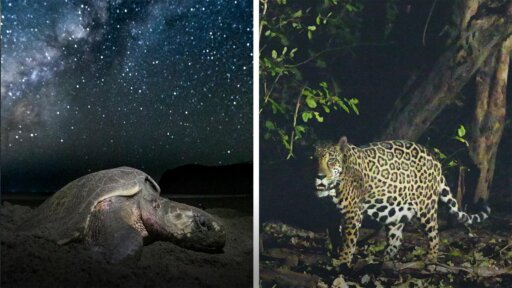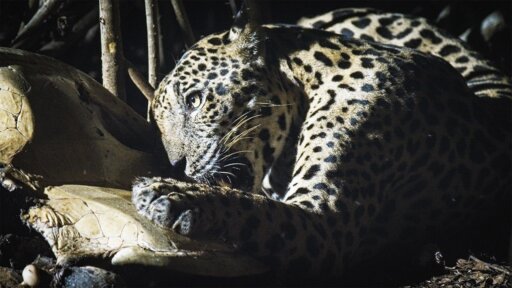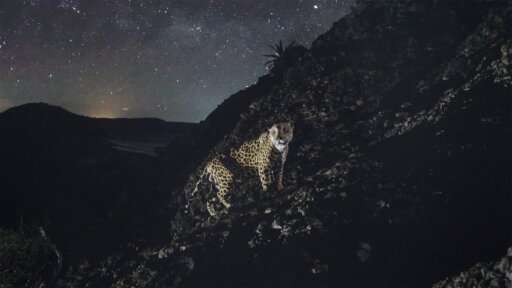TRANSCRIPT
- Jaguars have a pretty large range.
Their territory extends like around like a hundred miles or so.
It's obviously kind of impossible for us to just like be tracking jaguars by foot all year long.
So that's why for this project, camera traps are very important to be able to capture different behaviors and kind of get inside of the world of jaguars.
(jaguar rumbling) (jaguar purring) This is a trail that the jags use frequently to kind of access the beach, where the sea turtles are.
We have a pretty good chance of getting a good bit of jaguar activity in this area of them just kind of exiting the forest and coming out into the beach.
So technology with camera traps have really came a long way in the last couple years really.
You know, like these, for instance, they're all wirelessly connected.
These sensors are infrared beams, so whenever an animal passes in front of this area, it'll trigger the cameras to then record along with a light to turn on.
You get a range of different species coming up, like investigating what these things are.
We've had monkeys, tapirs, agoutis.
Literally everything in the forest is at least a little curious about it and they might give a little sniff or two.
(laughs) There's definitely a learning curve, so you really have to kind of like dial in all your sensors with the camera so that you're really getting just the shots that you need.
(wind whooshing) Jag had a little meal yesterday, so we're setting up some camera traps on a turtle.
Another day in paradise.
(jaguar gnawing) Wow, you can see her rip off a chunk of meat right there.
It looks like she's coming back.
The jaguar that the camera has just captured is Amanda.
We have got a couple of clips of her with cubs, and what she's doing right now, it all kind of makes sense because it looks like she's ripping meat off of the sea turtle and then going away for about like a minute or so and then coming back and taking more and returning back to feed I'm assuming her cubs.
You know, if it wasn't for camera traps, we wouldn't be able to film behaviors like this.
You know, we have a camera up in a tree, a closeup of it eating, a wide shot.
And if it wasn't for camera traps like that, that just wouldn't be possible, they wouldn't allow us to be that close.
One of the interesting things about this area is that in the 70s, it was really one big farm, one big pasture, and over the last 40, 50 years or so, there's been a lot of protection and they've re-forested most of this park.
So everything you're seeing around us, it's all regrown.
And because it's regrown, a lot of different species are returning like the jaguar.
You know, in the Americas, for instance, their habitat is diminishing pretty, pretty severely.
To me it proves that yes, like not only do we have jaguars returning to this area, but they're also reproducing and raising the next generation.
(footsteps thudding) (jaguar vocalizing) (jaguar vocalizing) It really should be looked at as an accomplishment that Costa Rica and Costa Ricans have made over the last 40 or 50 years.
It's something that people should be really proud of.
(wind whooshing)





